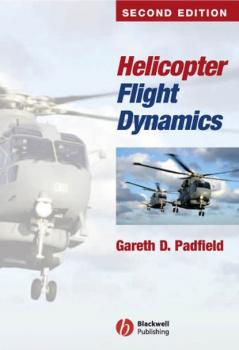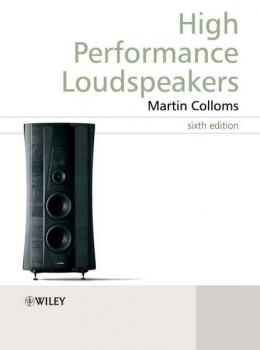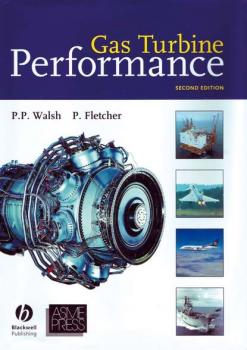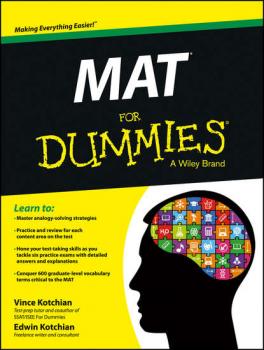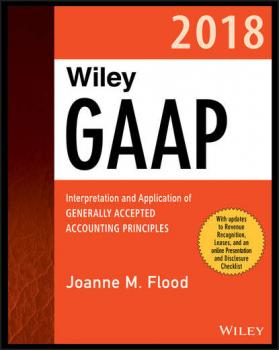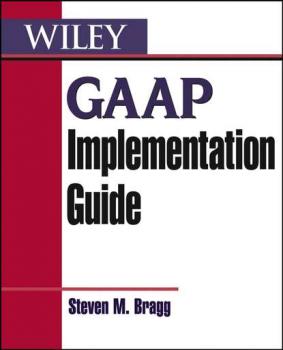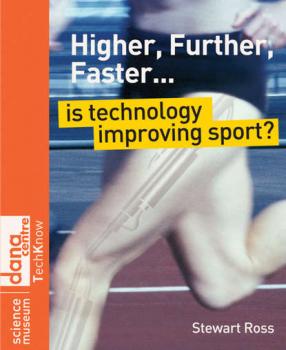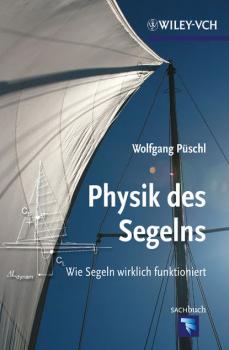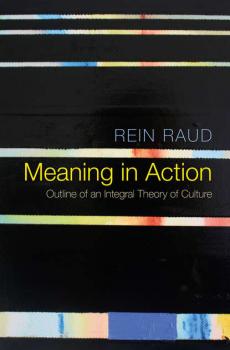ТОП просматриваемых книг сайта:
ЛИТМИР - LITMIR.BIZ - Электронная библиотека
Скачивание или чтение онлайн электронных книг.Аннотация
The behaviour of helicopters is so complex that understanding the physical mechanisms at work in trim, stability and response, and thus the prediction of Flying Qualities, requires a framework of analytical and numerical modelling and simulation. Good Flying Qualities are vital for ensuring that mission performance is achievable with safety and, in the first edition of Helicopter Flight Dynamics, a comprehensive treatment of design criteria was presented. In this second edition, the author complements this with a new Chapter on Degraded Flying Qualities, drawing examples from flight in poor visibility, failure of control functions and encounters with severe atmospheric disturbances. Fully embracing the consequences of Degraded Flying Qualities during the design phase will contribute positively to safety. The accurate prediction and assessment of Flying Qualities draws on the modelling and simulation discipline on the one hand and testing methodologies on the other. Checking predictions in flight requires clearly defined ‘mission-task-elements’, derived from missions with realistic performance requirements. High fidelity simulations also form the basis for the design of stability and control augmentation systems, essential for conferring Level 1 Flying Qualities. The integrated description of flight dynamic modelling, simulation and flying qualities forms the subject of this book, which will be of interest to engineers in research laboratories and manufacturing industry, test pilots and flight test engineers, and as a reference for graduate and postgraduate students in aerospace engineering. The Author Gareth Padfield, a Fellow of the Royal Aeronautical Society, is the Bibby Professor of Aerospace Engineering at the University of Liverpool. He is an aeronautical engineer by training and has spent his career to date researching the theory and practice of flight for both fixed-wing aeroplanes and rotorcraft. During his years with the UK’s Royal Aircraft Establishment and Defence Evaluation and Research Agency, he conducted research into rotorcraft dynamics, handling qualities and flight control. His work has involved a mix of flight testing, creating and testing simulation models and developing analytic approximations to describe flight behaviour and handling qualities. Much of his research has been conducted in the context of international collaboration – with the Technical Co-operation Programme, AGARD and GARTEUR as well as more informal collaborations with industry, universities and research centres worldwide. He is very aware that many accomplishments, including this book, could not have been achieved without the global networking that aerospace research affords. During the last 8 years as an academic, the author has continued to develop his knowledge and understanding in flight dynamics, not only through research, but also through teaching the subject at undergraduate level; an experience that affords a new and deeper kind of learning that, hopefully, readers of this book will benefit from.
Аннотация
High Performance Loudspeakers, Sixth Edition is a fully revised and updated version of the highly successful guide to the design and specifications of high quality loudspeakers and loudspeaker systems. Each chapter has been substantially revised reflecting the many changes in the technology of loudspeakers. These revisions take the form of much new research and accompanying illustrations, with a radically new theoretical section, allied to in-depth coverage of the most important advances in the art of loudspeaker design. By clearly and practically analysing these many developments the authors have produced an authoritative loudspeaker designer's bible. Key features of the Sixth Edition include: Radically new chapter on acoustic theory, developments in home theatre and surround systems, in speaker system design. Also crossover networks with new digital synthesis methods, and extensive reporting on CAD software New measurement systems and techniques are complemented by recent psychoacoustic research data. Expanded material on sub-sat design, 2pi and boundary speaker design, further work on optimum low frequency synthesis for improved group delay. New materials technology including ceramic and diamond diaphragms, plus first publication of the theory of the BMR, a fascinating hybrid driver technology employing a synthesis of bending wave and pistonic action and which can approach the directivity of a point source. Glossary; a valuable view of electroacoustic terms and definitions to guide all readers. Acknowledged industry-wide as the definitive work on speaker design and analysis, this book is essential reading for audio engineers, speaker designers, equipment designers and students of acoustic engineering, electronics and electro-acoustics. It will also prove invaluable to students of electronics, broadcasting and recording techniques, and be of interest to amateur loudspeaker builders, authors and journalists in audio.
Аннотация
A significant addition to the literature on gas turbine technology, the second edition of Gas Turbine Performance is a lengthy text covering product advances and technological developments. Including extensive figures, charts, tables and formulae, this book will interest everyone concerned with gas turbine technology, whether they are designers, marketing staff or users.
Аннотация
Describes how to make economic decisions regading safety in the chemical and process industries Covers both technical risk assessment and economic aspects of safety decision-making Suitable for both academic researchers and practitioners in industry Addresses cost-benefit analysis for safety investments
Аннотация
Score your highest on the MAT? Easy. The MAT exam is one of the hardest intellectual challenges in the field of standardized testing. Students preparing to take this exam need a chance to practice the analogy skills necessary to score well on this test, which MAT For Dummies provides with its six full-length practice tests and plethora of other test preparation suggestions. MAT For Dummies includes test-specific analogy strategies, practice and review for each content area, word/terms lists covering the major subject categories, and six practice tests with detailed answer banks. Goes beyond content knowledge and teaches you the test-taking skills you need to maximize your score Includes six full-length practice tests with complete answer explanations Helps you score high on MAT exam day If you're a potential graduate student preparing for the MAT, this hands-on, friendly guide helps you score higher.
Аннотация
Get the most comprehensive coverage of the FASB Codification and the latest FASB updates in a single volume Wiley GAAP 2018: Interpretation and Application of Generally Accepted Accounting Principles is a thorough study and analysis of all US Generally Accepted Accounting Principles (GAAP) set forth in the pronouncements of the FASB (Financial Accounting Standards Board) Codification. All topics are explained with relevant terminology and practice-oriented real world examples. Each chapter is composed of a discussion of perspectives and issues, definitions of terms, concepts, rules, and examples. US GAAP is constantly being updated, and its users require expert interpretation and explanation of the relevant principles. This book provides the most comprehensive coverage of each Codification topic. It contains clear, user-friendly guidance on every pronouncement. Fully up-to-date with all the latest changes, including those to inventory, financial instruments, revenue, and leases Includes more real-world examples and illustrations than competing titles Arranged according to the FASB Codification, all topics are referenced to the Codification Wiley GAAP 2018 renders GAAP more understandable and accessible for research and is designed to reduce the amount of time and effort needed to solve accounting research and implementation issues, making it the best go-to source for CPAs and others working in accounting.
Аннотация
The most practical, authoritative guide to implementing GAAP Until now, accountants have had no guidance for what controls, policies, procedures, forms, reports, or archiving requirements they should use to properly mesh with the latest GAAP. An ideal companion volume to the Wiley GAAP guide, the GAAP Implementation Guide provides the practical application information essential to ensuring that a company's accounting systems are fully capable of incorporating the most recent GAAP. GAAP Implementation Guide features handy, illustrative decision trees showing how to determine which GAAP ruling to use in a variety of situations, eliminating hours of time wading through detailed GAAP rulings. Other helpful, timesaving features include: A concise version of the more detailed GAAP found in the Wiley GAAP guides Specific accounting policies that comply with GAAP, especially in terms of creating controls that mesh with GAAP The most common accounting transactions modified to work within GAAP restrictions Specific controls that allow the maximum level of control over accounting systems while remaining in compliance with GAAP Templates for forms and reports that can be used in a GAAP-compliant accounting system Numerous examples of footnotes that can be used to describe GAAP-mandated financial disclosures Hundreds of GAAP-compliant journal entries for most accounting transactions Identification of the types of reports and other information to be retained as part of a comprehensive accounting system GAAP Implementation Guide is a valuable tool for CFOs, controllers, accounting managers, and general ledger accountants who need to ensure that their company properly treats all types of accounting transactions in accordance with GAAP.
Аннотация
Sport is undergoing a global technological revolution. Year on year, records are smashed, equipment gets more sophisticated, facilities improve almost beyond recognition. These changes are impacting on all areas of sport, from shoes to cycles and stadia. Is this making sport more exciting for participants and spectators? Or are talent and determination becoming secondary to money and technology, devaluing honest competition? In Higher, Further, Faster…, Stewart Ross looks at these questions and much more. Starting with a description of technology's impact on elements common to various sports, such as bats, balls, pitches and special clothing, he then examines the controversies that arise almost daily, from golf club technology to the use of Hawk-eye in tennis. He also looks ahead to the techno-future of major sports such as football, tennis, golf, cricket, cycling and motor sport, and asks where they are going: Are referees and umpires becoming redundant? If drugs will always win, do we really have a choice about using them? Will we ever see a Super-Human Olympics? Is modern professional sport more about technology than talent? Can athletes from the developing world ever hope to compete in modern sport? This book is a must-read for all participants and fans who want to understand the technological upheaval that is shaking modern sport to its very foundations. One thing's for sure: whether you find it stimulating or just plain scary, the future will be very, very different… About the author Stewart Ross is a full-time writer with some 200 published titles to his credit. He is also an occasional journalist and broadcaster, a frequent lecturer, notably on the QE2 and at ICES (La Roche sur Yon, France, where he lectures to science students), and a much sought-after presenter of workshops to schools and adult groups. www.stewartross.net
Аннотация
Eine Einführung in die physikalischen Grundlagen des Segelsports für die an Naturwissenschaften interessierten Segler, die schon immer wissen wollten, wie Segeln tatsächlich funktioniert. »Physik des Segelns« führt zunächst in die einfachen Grundsätze und Bedingungen des Segelns ein, wie beispielsweise das Kräftegleichgewicht während der Fahrt. Anschließend wird aus den Eigenschaften von Luft und Wasser und den dynamischen Grundgleichungen das Entstehen dieser Kräfte dargelegt. Das Buch räumt mit verbreiteten falschen Vorstellungen auf und schreitet systematisch von der Betrachtung zweidimensionaler Phänomene zu dreidimensionalen Phänomenen voran. Von Erscheinungen innerhalb der Medien Luft und Wasser geht es weiter zu den Erscheinungen an ihrer Grenzfl äche, den Schwerewellen des Wassers und dem damit verbundenen Widerstand. Mit der Kenntnis aller Beiträge zur Vortriebsleistung wird erläutert, wie sie aufeinander abgestimmt werden müssen, um ein optimales Segeltempo zu erreichen. Abschließend werden zeitlich veränderliche Phänomene wie Manöver und das Arbeiten des Bootes im Seegang betrachtet, und die Materialfestigkeit von Takelage und Rumpf diskutiert.
Аннотация
In this important new book Rein Raud develops an original theory of culture understood as a loose and internally contradictory system of texts and practices that are shared by intermittent groups of people and used by them to make sense of their life-worlds. This theory views culture simultaneously in two ways: as a world of texts, tangible and shareable products of signifying acts, and as a space of practices, repeatable activities that produce, disseminate and interpret these clusters of meaning. Both approaches are developed into corresponding models of culture which, used together, are able to provide a rich understanding of any meaning in action. In developing this innovative theory, Raud draws on a wide range of disciplines, from anthropology, sociology and cultural studies to semiotics and philosophy. The theory is illustrated throughout with examples drawn from both 'high' and popular culture, and from Western and Asian traditions, dealing with both contemporary and historical topics. The book concludes with two case studies from very different contexts – one dealing with Italian poetry in the 13th century, the other dealing with the art scene in Eastern Europe in the 1990s. This timely and original work makes a major new contribution to the theory of culture and will be welcomed by students and scholars throughout the social sciences and humanities.

